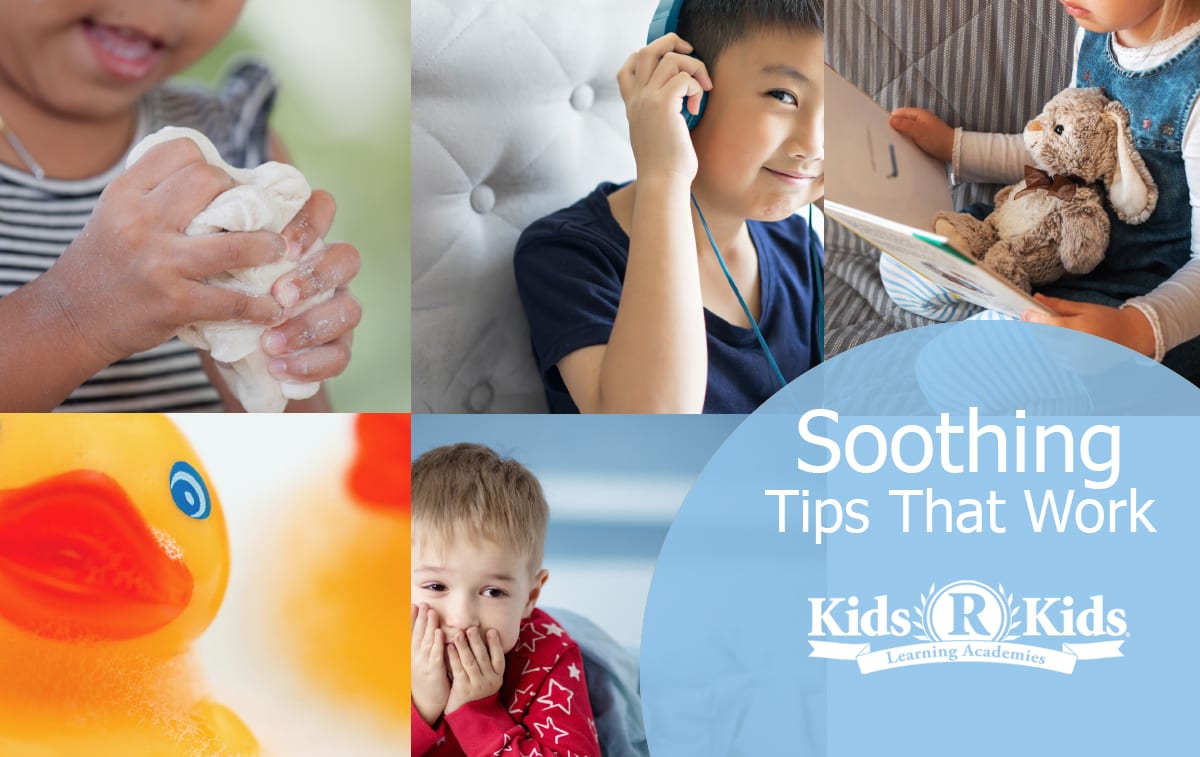Anxious children need soothing rituals. They need things to be constant, predictable. Especially children with autism spectrum disorders. Like a sunrise or a rainbow after a summer storm, soothing rituals are beautiful, special and sacred.
Soothing rituals are a moment in time where you give your child the gifts of peace and tranquility that their anxious minds and bodies need. Expectation is the key. When soothing rituals become a habit, children can look forward to experiencing periods of calm.
Rituals are physical actions that give your child mental cues that it is time to quiet their bodies and calm their minds.
These cues help your child’s brain increase serotonin, the feel-good chemical that helps them relax. These breaks from anxiety and negative feelings result in better mental health which has positive repercussions in every aspect of a child’s life.
So how do you determine when to use a soothing ritual, and what should it be?

Determine areas where your child struggles with anxiety or self-regulation.
Here are some common areas where your child might struggle:
- Getting up in the morning
- Going to bed or staying in bed at night
- Transitioning between activities
- From being away to coming back home
- Taking a bath
- Settling down to do homework
- Riding in the car
Notice what activities or resources calm your child.
- Listening to music on headphones
- Squeezing a therapy dough product
- Reading a book in a cozy nook
- Cuddling under a weighted lap pad or blanket
- Rocking on a rocking chair
- Getting a gentle massage
Knowing what areas your child struggles with and the activities or resources that calm them give you an idea of when you need a ritual and what elements to include.
The trick in making soothing rituals soothing, and not overwhelming; to include enough sensory elements to calm your child but not so many that they become overstimulated.
Here are some examples of soothing rituals. Remember, these are just examples of rituals you can create. If your child likes aromatherapy, by all means include essential oils in your rituals.
Mornings:
Some children perpetually wake up on the wrong side of the bed. Their misery becomes your misery. It’s not good for children or parents to start the day with frustration, anger and anxiety.
Morning Cuddles:
Some children enjoy being awakened gently with a massage or cuddles. (Some children with Autism Spectrum Disorders do not like touch…remember, you know your child best.)
Music:
Playing a certain song, every morning at the same time, for dressing, or teeth brushing and hair combing, or whatever element of the routine your child struggles with, helps them focus and attend to the task.
Hearing the song cues their brain, “Okay, now it’s time to…get dressed, brush my teeth, etc.)
Reward:
For children who struggle with mornings, allowing a reward, choice activity, a five-minute therapy dough break, etc., when they have completed their routines gives them something to look forward to and often helps them attend to tasks like dressing, brushing teeth, sitting down for breakfast, etc.
Also consider having your child help you organize their clothes the night before, laid out on the floor or dresser, so there is no confusion or fighting about what to wear. (This works very well for children with ADD/ADHD.)
Transitions:
Children with autism spectrum disorder especially struggle with transitions. Some common rough spots are often after school or preschool/between activities or being away from home.
Aromatherapy suggestion:
When you child arrives home from school or is transitioning from one activity to the other diffuse a favorite oil like Vanilla, Frankincense, Cedar wood, or Douglas Fir (crisp, clean and refreshing).
The scent acts as a cue letting the child know, “Play time is over, now I will start my homework.” Or “Now that I am back from preschool I will settle into my home routine.”
- Playing with therapy dough?
- Chilling in a therapy hammock?
- Coloring with a weighted lap pad (possibly one warmed in the microwave?)
- Putting on noise cancelling headphones and “decompressing” in a “tent” or special fort.
Additional Ideas:
Keep it Soft: Lighting, voices and sound.
Bath time: Have soothing instrumental music playing on a speaker, and make sure that your child is gently unwinding and not going for gold in the Splash-Olympics.
Guided Meditations: Available in books or online
Bedtime Yoga or Stretching: Try gentle stretching or children’s yoga poses designed for relaxing bodies.
Progressive Muscle Relaxation: Tensing and relaxing different muscle groups.
Storytime: Have books selected in advance and stick to that number. Aim for books with soothing illustrations whenever possible. Chapter books are great read-aloud books for older children.
Music: Sing gentle lullabies or stream peaceful instrumental selections.
Cuddle: Most children enjoy gentle massage or cuddling while snuggled in bed. Consider a weighted blanket if your child likes deep pressure stimulation.
By Janis D. Gioia, MA Ed